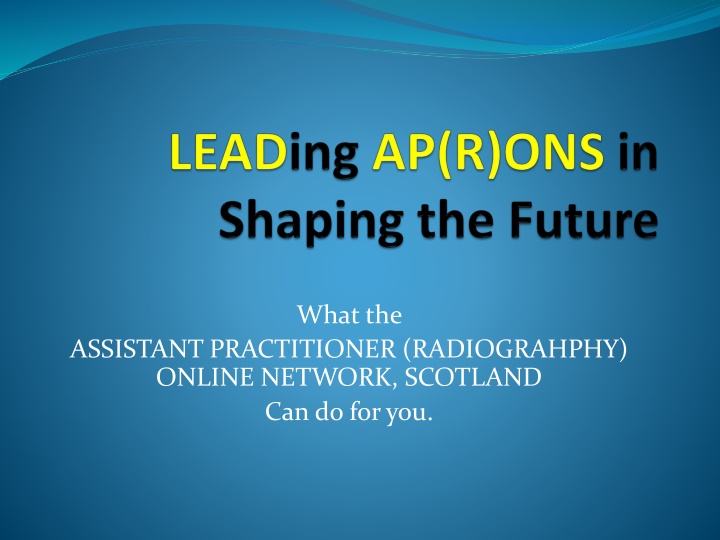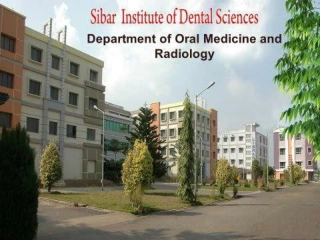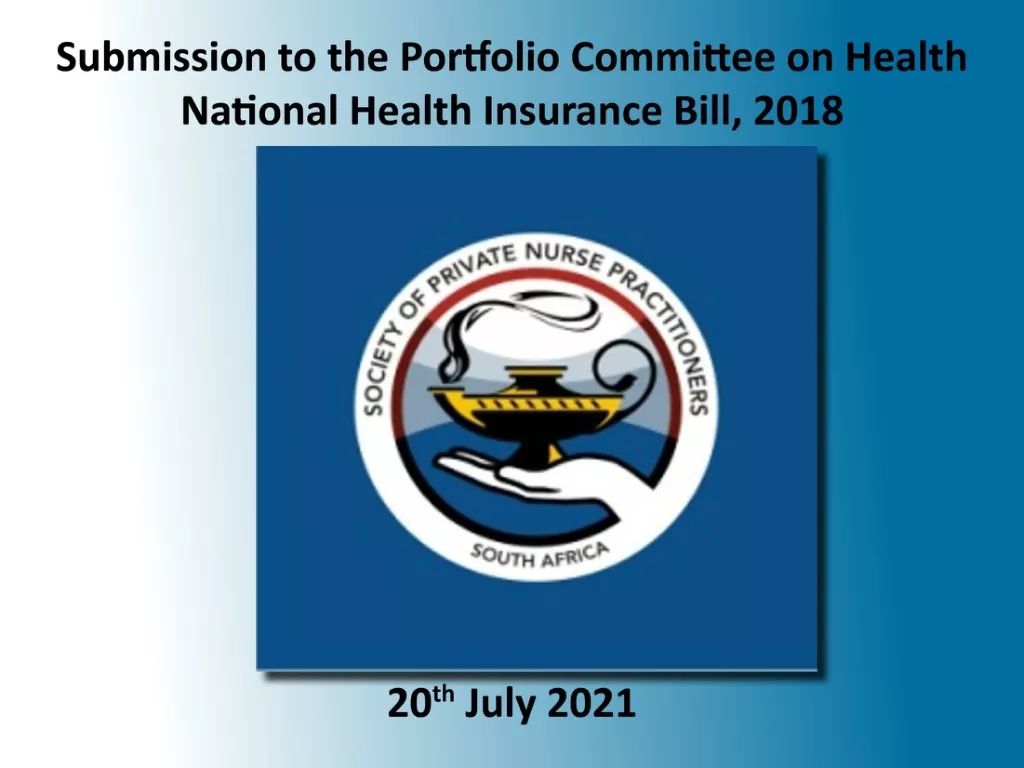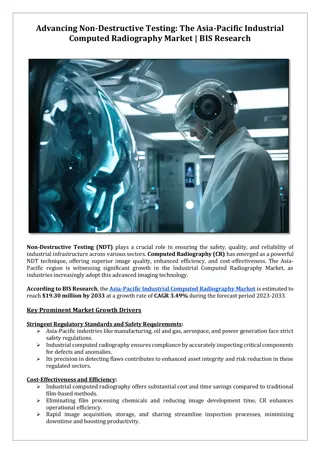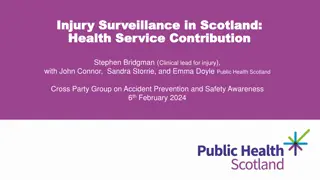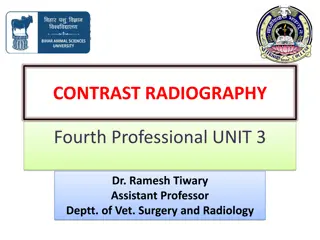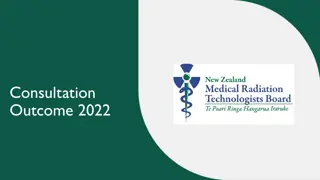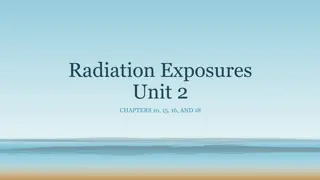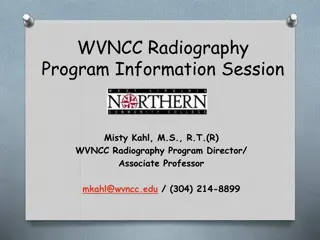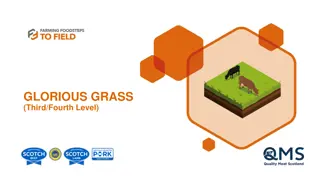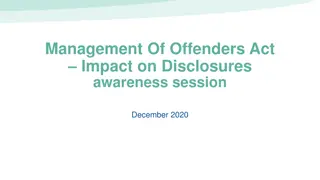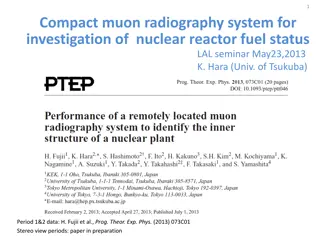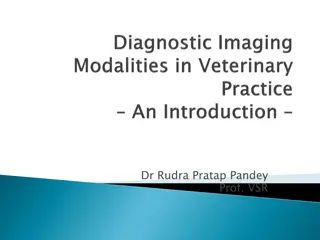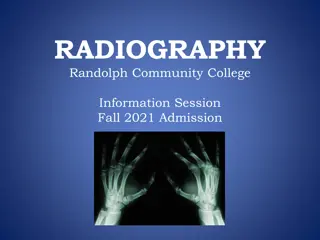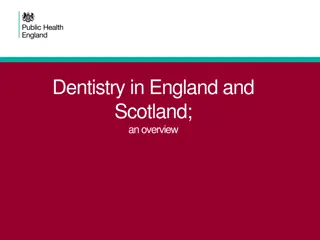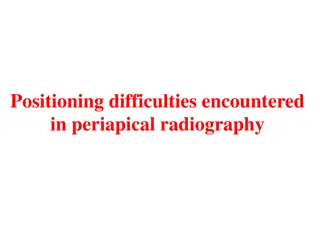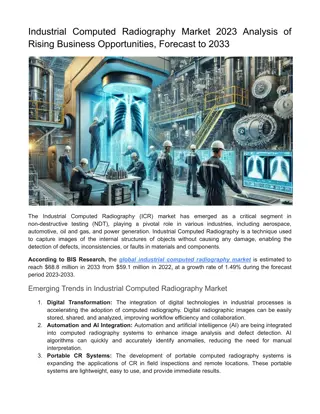Assistant Practitioners in Scotland: Enhancing Radiography Services
Assistant Practitioners (APs) in Scotland play a vital role in supporting radiography services, allowing radiographers to focus on specialized areas. They are highly skilled professionals with diverse backgrounds, providing high-quality imaging services. While APs face limitations in their roles, there is a potential for reshaping the current model to enhance efficiency and support career progression in the field of radiography.
Download Presentation

Please find below an Image/Link to download the presentation.
The content on the website is provided AS IS for your information and personal use only. It may not be sold, licensed, or shared on other websites without obtaining consent from the author.If you encounter any issues during the download, it is possible that the publisher has removed the file from their server.
You are allowed to download the files provided on this website for personal or commercial use, subject to the condition that they are used lawfully. All files are the property of their respective owners.
The content on the website is provided AS IS for your information and personal use only. It may not be sold, licensed, or shared on other websites without obtaining consent from the author.
E N D
Presentation Transcript
What the ASSISTANT PRACTITIONER (RADIOGRAHPHY) ONLINE NETWORK, SCOTLAND Can do for you.
Background Assistant Practitioners have been around in Scotland for over a decade. First ones in Scotland took up their posts in 2009. Currently thought to be 85 APs across 14 Boards. Mainly diagnostic. ? How many in the private sector.
Why Assistant Practitioners? Not generally to make savings, as any money saved was typically used elsewhere in the budget. Brought in to free radiographers to move into other areas/modalities. To comply with the 4-tier structure model. Also significantly to aid retention of Clinical Support Workers by providing opportunities for career progression.
Who are APs? We are a highly skilled workforce, drawn from a wide variety of backgrounds: Most of us have come from the ranks of Healthcare Support Workers, so already had a solid grounding in patient care. Also, because most were mature, many had previous work experience in sectors as diverse as clerical, retail, design and the creative arts, bringing with them a wide range of additional skills.
The Role of the AP Quickly became core members of staff, usually working Monday to Friday, 9-5 in the general x-ray rooms. Over time, we have finely honed our skills in plain film radiography, now consistently delivering high quality images.
Limitations of the role Need to get every single examination justified by a more qualified member of staff prior to x-raying, regardless of the clinical indications. Also need someone more qualified to check all our images. Need to have more qualified staff present in the room at the time if patient flow is to be maintained.
The Current Situation The requirement to seek justification for examinations for which the justification criteria has never changed can be deeply disruptive to patient flow through a department, and may be a source of frustration and potential disillusionment for APs. ? Retention issues again Many APs now qualified for longer than radiographers supervising, (including some band 6s). Many of the recently qualified radiographers are more accepting of our knowledge, skills and experience.
Shaping The Future There seems to be some consensus building that the old model we worked to has outlived its usefulness. We are here today to get the ball rolling towards change that works for Assistant Practitioners, Departments and patients. Instrumental in driving that change, will be AP(R)ONS.
What is AP(R)ONS ASSISTANT PRACTITIONERS (RADIOGRAPHY) ONLINE NETWORK, SCOTLAND. For both Diagnostic and Therapeutic Radiography APs across Scotland. Formed on October 24th, 2019 at the AP group meeting in Edinburgh. Three office bearers were elected at the meeting.
Chair CATHY MUNRO based at Stobhill ACH, NHS Greater Glasgow and Clyde. Became an AP in 2011 after Qualifying from Stow College, following up in 2013 with a DipHE from Robert Gordon University, Aberdeen in 2013 Catherine.Munro@ggc.scot.nhs.uk
Vice Chair KAREN MORRIS Based at University Hospital Monklands, Lanarkshire. Qualified as an AP in 2012, having completed the first year of the DipHE course at Robert Gordon University, and graduated in 2013. Karen.Morris@lanarkshire.scot.nhs.uk
Secretary ANNE MARIE HOWLEY Based at University Hospital Hairmyres, Lanarkshire Qualified as an AP in 2012 after completing a year s course at Robert Gordon University, Aberdeen. AnneMarie.Howley@lanarkshire.scot.nhs.uk
Objects Of The Group To raise the profile of Assistant Practitioners. To highlight the important role that APs play in Radiology departments. To share good practice, knowledge and experience. To identify training and development needs. To ensure all APs have a voice!
Also One of our main aims is to strive for consistency of working conditions for APs throughout Scotland, by keeping departments informed about developments elsewhere, e.g. ensuring APs are wearing a suitable uniform, reflecting the additional training they have undertaken, and skills they use daily.
Communication is key There have been issues in the past where information has not been cascaded to all Assistant Practitioners. We would like to try to prevent this from happening in future. We hope to open up a communication highway for APs. Will enable us to make sure that all APs are kept informed and up-to-date with forthcoming events, training opportunities, and any other relevant developments.
Sharing For Shaping Initially, though, the most significant function of the group is the sharing of information concerning areas such as guidelines, local rules and Scopes of Practice. If your board already has any of these already in place, it would be useful if you could share them with us. This will enable us to work towards a consistent approach.
Forum For The Future We hope to be able to: develop other methods of contact, through social media (Twitter / Instagram), and perhaps a website (in the meantime, we have a tab on the SCIN website). Have ongoing online contact encouraging all APs to share their ideas and experience among the group. organise regular events. Work towards up-dating our Scopes of Practice.
Become A Member MEMBERSHIP IS FREE, but your contribution is priceless! To enable your voice, simply register with the group by contacting one of the office bearers (see Appendix at the end). You will be added to the group email distribution, which will enable us to keep each other informed of future developments, learning opportunities and events. Join our Facebook page this is a private account for Radiography Assistant Practitioners only.
Dont be shy... To enable us to extend the network, we need volunteers. The current office bearers are all from the West, Central area of Scotland. It would be great if we could have more involvement from a bit further afield. If you are able to help with the Social media or Web pages, - or some other way we maybe haven t thought of - please don t be shy, get in touch and get involved (see contact details on the following slide). THANK YOU.
Appendix: Contact details SCIN: NSS.SCIN@nhs.net To access AP(R)ONS information via the SCIN website, go to the homepage, scroll down and click on SPECIAL INTEREST GROUPS then select APRONS, or: select the SCIN WORK tab along the top, followed by Special Interest Groups then Assistant Practitioners Group (APRONS) Catherine.Munro@ggc.scot.nhs.uk Karen.Morris@lanarkshire.scot.nhs.uk AnneMarie.Howley@lanarkshire.scot.nhs.uk
